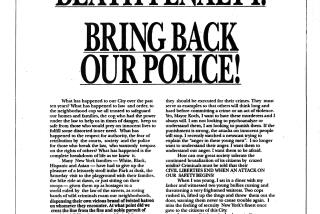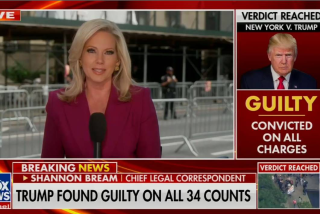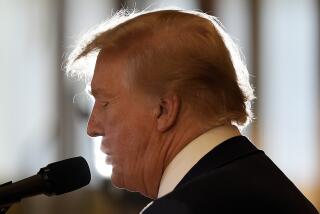Guilty verdict in Boston bombing sets stage for trial’s death penalty phase

<table style=”height: 5px;” width=”482”> <tbody> <tr> <td class=”label”>Dzhokhar Tsarnaev was convicted on all charges Wednesday in the Boston Marathon bombing.</td> <td> <p> </p> </td> </tr> </tbody> </table>
Reporting from Boston — For a city still traumatized by the worst terrorist attack on U.S. soil since Sept. 11, 2001, the 30 guilty verdicts announced Wednesday against Boston Marathon bomber Dzhokhar Tsarnaev offered a moment of closure and unity.
The next phase of the trial, when a seven-woman, five-man federal jury decides how to punish the young Russian immigrant, could prove more painful and divisive given the stark differences in the community between those who want Tsarnaev put to death and those opposed to capital punishment.
But for survivors of that chaotic, bloody day in April 2013 — when twin explosions killed three people and wounded more than 260 others — the government’s victory in winning convictions on all counts against Tsarnaev provided a chance to come together in shared grief and resolve.
At the race finish line on Boylston Street on Wednesday, someone left four yellow roses — one for each victim of the blast and another for the police officer killed during the search for Tsarnaev and his older brother, Tamerlan.
“Justice has been served today,” said Dic Donohue, a Boston transit officer who was wounded in the shootout between the Tsarnaevs and police. “We have again shown as a society that terrorism will not prevail.”
Tsarnaev, 21, thin, tousle-haired and lightly bearded, stood in the federal courtroom in Boston for half an hour as the clerk read all 31 pages of the jury’s verdict form in a steady, droning voice, reciting the word “guilty” over and over.
But Tsarnaev showed little interest in the proceedings. He sometimes scratched his neck or cracked his knuckles and always looked away from the jury box.
A few jurors, by contrast, glared at him. And when U.S. District Judge George A. O’Toole Jr. asked if their verdicts were unanimous, all of the jurors responded in one loud, clear voice: “Yes.” Then a cadre of U.S. marshals in suits and ties surrounded Tsarnaev, who was dressed in a dark sports coat, and ushered him out a side door and back to jail.
Bombing survivor Karen Brassard said afterward that she was not surprised by Tsarnaev’s lack of emotion, calling his demeanor during the trial “arrogant” and “disinterested.” If he had expressed remorse during the reading of the verdicts, she said, “I wouldn’t have bought it.”
The counts against Tsarnaev included conspiracy to use weapons of mass destruction at the annual racing event and murdering four people, including rookie MIT Police Officer Sean Collier. The two pressure-cooker bombs were filled with nails, metal shards and BBs, shrapnel that shredded victims’ flesh.
Krystle Campbell, 28; Lingzi Lu, 23; and Martin Richard, 8, were killed in the blast. Seventeen others lost one or both legs.
On the streets of Boston, which endured another wicked blast of sleet and ice Wednesday, the verdict was welcome news. One shop window was painted with a sign reading “B Strong,” a reference to a group of survivors and supporters calling themselves “Boston Strong.”
“I may be standing on one fake leg, but I’m standing stronger than ever,” said Rebekah Gregory DiMartino, who lost her left leg in the blasts and testified during the trial. She spoke on television to reporters outside her Texas home.
In Boston, U.S. Atty. Carmen M. Ortiz appeared optimistic that the trial would result in the government’s first death sentence in a terrorism case since the Sept. 11 attacks. “We are focused on the work that remains to be done,” she said.
Leaving the courtroom, defense lawyers brushed past reporters. Lead attorney Judy Clarke, one of the nation’s top anti-death penalty lawyers, has yet to see one of her clients sent to death row.
It is now her job to save Tsarnaev’s life in the penalty phase, when experts expect to see a more robust legal battle. Although the government will push hard for a death sentence, Clarke will argue for a sentence of life in prison without parole, maintaining that Tamerlan was the bombing mastermind and Dzhokhar his acolyte.
O’Toole instructed the jury to return to his third-floor courtroom early next week for opening statements.
The first part of the trial lasted a month as the prosecution called 92 witnesses, including victims of the attack, and showed jurors surveillance video depicting Tsarnaev placing his bomb near a family with children. The case included a visit by jurors to inspect the boat where Tsarnaev was captured and where he had scribbled notes about his anger toward America and devotion to Islam.
The trial moved faster than anticipated, largely because the defense called only four witnesses and Clarke acknowledged in her opening statement that Tsarnaev took part in the bombing.
The next phase could end even more quickly, perhaps as soon as two weeks, because there will be less evidence and more emphasis on appealing to jurors’ emotions.
Prosecutors will rely again on victims’ testimony, asking some of the amputees and relatives of the four people killed to describe in detail how their lives have changed.
But despite the lingering anger in Boston about the attack, prosecutors face widespread ideological opposition to the death penalty in the New England state. This week, a group representing the Roman Catholic bishops of Massachusetts handed out leaflets in front of the harbor-side courthouse saying that Tsarnaev in prison “will never again have the ability to cause harm” and that “society can do better than the death penalty.”
Before being selected, all 12 jurors swore to the judge that they would be open to a death sentence and could set aside any sympathy for Tsarnaev if they decided he deserved to die. But to avoid the death penalty, the defense only needs to convince a single juror.
An equally daunting challenge confronts the defense. Led by Clarke, they will portray Tsarnaev as a loner, a failure at college and a casualty of a broken family. More significantly, they will argue that he was under the spell of his more radicalized older brother.
“Tamerlan led and he followed,” Clarke told the jury during the trial. Tamerlan was killed during the police shootout.
Yet shortly before Dzhokhar Tsarnaev was captured, he left a message scrawled in pencil on the inside of the boat where he was hiding in Watertown, Mass.
“The U.S. Government is killing our innocent civilians but most of you already know that,” he wrote. “... I can’t stand to see such evil go unpunished. ... We are promised victory and we will surely get it. Now I don’t like killing innocent people it is forbidden in Islam but … it is allowed.”
More to Read
Sign up for Essential California
The most important California stories and recommendations in your inbox every morning.
You may occasionally receive promotional content from the Los Angeles Times.











